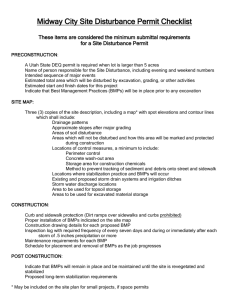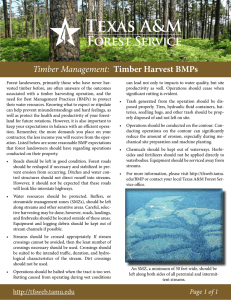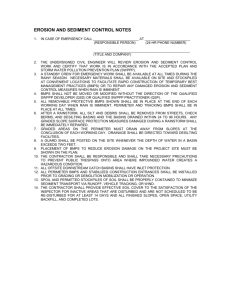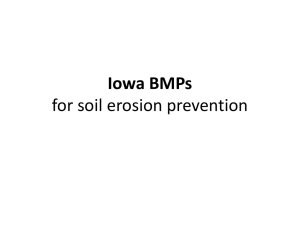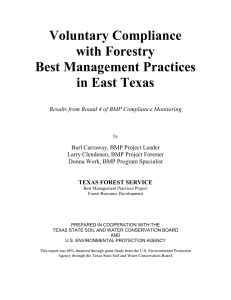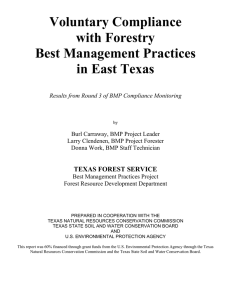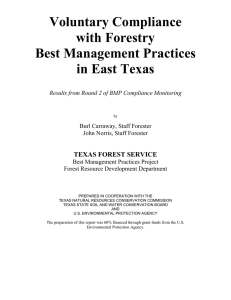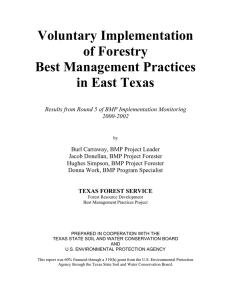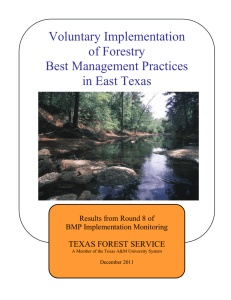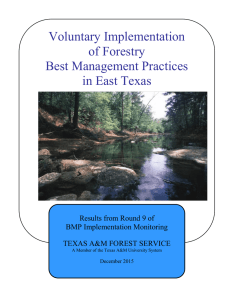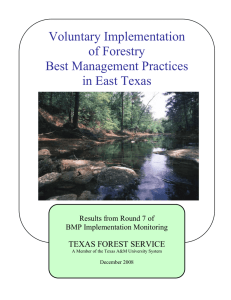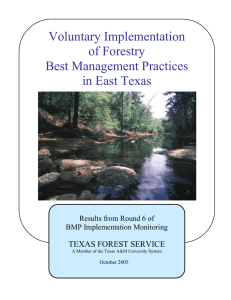A system to evaluate the level of compliance and effectiveness...
advertisement
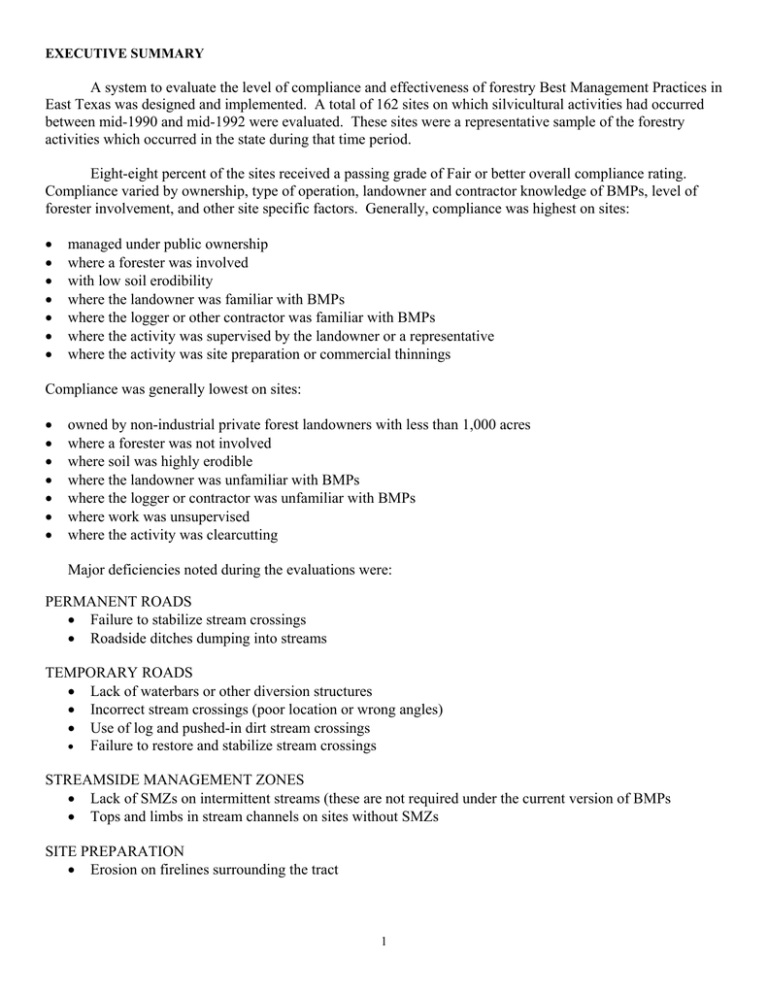
EXECUTIVE SUMMARY A system to evaluate the level of compliance and effectiveness of forestry Best Management Practices in East Texas was designed and implemented. A total of 162 sites on which silvicultural activities had occurred between mid-1990 and mid-1992 were evaluated. These sites were a representative sample of the forestry activities which occurred in the state during that time period. Eight-eight percent of the sites received a passing grade of Fair or better overall compliance rating. Compliance varied by ownership, type of operation, landowner and contractor knowledge of BMPs, level of forester involvement, and other site specific factors. Generally, compliance was highest on sites: • • • • • • • managed under public ownership where a forester was involved with low soil erodibility where the landowner was familiar with BMPs where the logger or other contractor was familiar with BMPs where the activity was supervised by the landowner or a representative where the activity was site preparation or commercial thinnings Compliance was generally lowest on sites: • • • • • • • owned by non-industrial private forest landowners with less than 1,000 acres where a forester was not involved where soil was highly erodible where the landowner was unfamiliar with BMPs where the logger or contractor was unfamiliar with BMPs where work was unsupervised where the activity was clearcutting Major deficiencies noted during the evaluations were: PERMANENT ROADS • Failure to stabilize stream crossings • Roadside ditches dumping into streams TEMPORARY ROADS • Lack of waterbars or other diversion structures • Incorrect stream crossings (poor location or wrong angles) • Use of log and pushed-in dirt stream crossings • Failure to restore and stabilize stream crossings STREAMSIDE MANAGEMENT ZONES • Lack of SMZs on intermittent streams (these are not required under the current version of BMPs • Tops and limbs in stream channels on sites without SMZs SITE PREPARATION • Erosion on firelines surrounding the tract 1 In terms of water quality impact, stream crossings are the most significant problem. The use of log and dirt crossings on temporary roads and the failure to restore and stabilize stream crossings on both permanent and temporary roads are major deficiencies that should receive priority attention in the future. Compliance checks were also helpful in evaluating BMP effectiveness. When implemented properly, BMPs are effective in controlling nonpoint source pollution. Failures observed were the result of either incorrect implementation or failure to use other needed BMPs in conjunction with those that were used. Although the BMPs appear to be effective means of preventing nonpoint source pollution, two weak areas were identified. These weaknesses resulted in recommendations that BMP be revised to include: • • Extension of streamside management zones to include protection of intermittent streams Increased attention to control of fireline erosion These changes have already been incorporated into a revised set of BMP guidelines, which are currently under final review. BMP compliance has historically been superior on lands managed by government agencies, particularly the USDA Forest Service. Results from this round of compliance monitoring provide evidence of this. The major forest products companies have done a commendable job since 1990 in incorporating BMPs into operations on fee-owned lands, although improvements are possible. Large non-industrial private landowners appeared to do at least as well as forest industry in terms of compliance. Most of these tracts are managed by a private consulting forester. The major weakness in compliance is on non-industrial private tracts. Results show, however, that compliance is higher when both logger and landowner are familiar with Best Management Practices. Education is clearly the key to improving compliance among this ownership category. With over 150,000 landowners and 2,500 loggers and contractors to reach, this will require a long-term educational effort. 2


